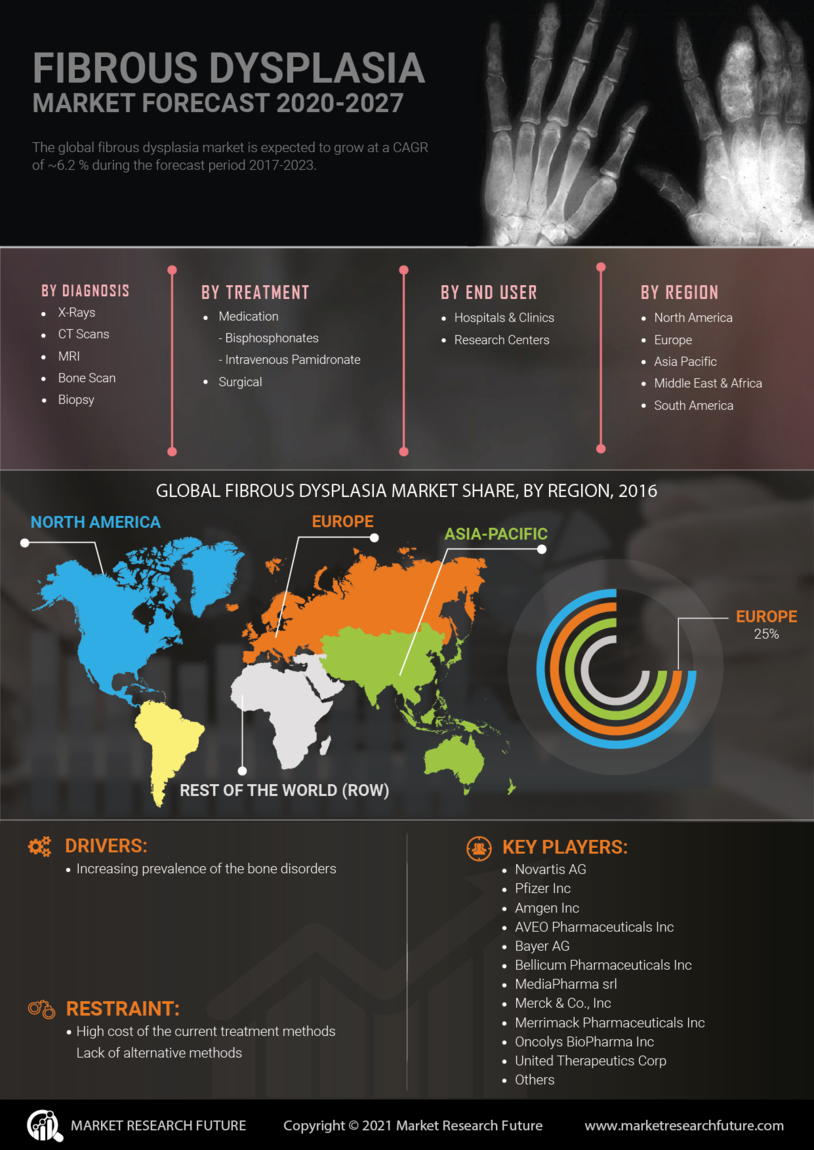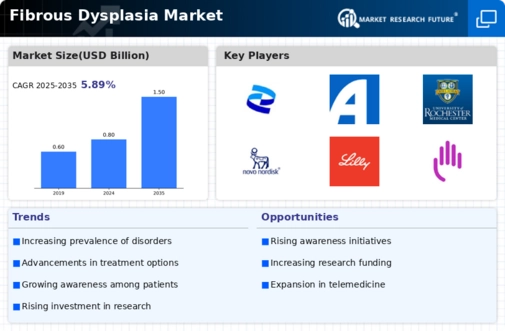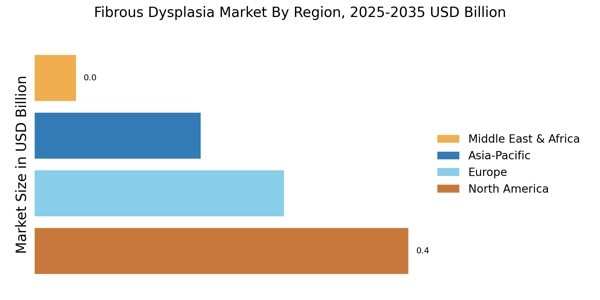Advancements in Treatment Modalities
Innovations in treatment modalities are significantly influencing the Fibrous Dysplasia Market. Recent developments in targeted therapies and surgical interventions have shown promise in managing the symptoms and complications associated with fibrous dysplasia. For instance, bisphosphonates have emerged as a potential treatment option, demonstrating efficacy in reducing pain and preventing fractures. Additionally, the introduction of minimally invasive surgical techniques has improved patient outcomes and reduced recovery times. As these advancements continue to evolve, they are likely to attract investment and research efforts, further stimulating the Fibrous Dysplasia Market. The ongoing exploration of novel therapeutic agents and combination therapies may also enhance treatment efficacy, thereby expanding the market's potential.
Regulatory Support and Policy Initiatives
Regulatory support and policy initiatives play a vital role in shaping the Fibrous Dysplasia Market. Governments and regulatory bodies are increasingly recognizing the need for improved treatment options for rare diseases, including fibrous dysplasia. Initiatives aimed at expediting the approval process for orphan drugs and providing incentives for research and development are likely to encourage pharmaceutical companies to invest in this area. Furthermore, favorable reimbursement policies can enhance patient access to innovative therapies, thereby driving market growth. As regulatory frameworks continue to evolve, they may create a more conducive environment for the development and commercialization of treatments for fibrous dysplasia, ultimately benefiting patients and stakeholders in the Fibrous Dysplasia Market.
Increasing Prevalence of Fibrous Dysplasia
The rising incidence of fibrous dysplasia is a pivotal driver for the Fibrous Dysplasia Market. Recent estimates suggest that this condition affects approximately 1 in 100,000 individuals, with a notable prevalence in younger populations. As awareness of the disease grows, more patients are being diagnosed, leading to an increased demand for treatment options. This trend is further supported by advancements in diagnostic techniques, which enable earlier detection and intervention. Consequently, healthcare providers are more likely to seek innovative therapies and management strategies, thereby propelling the Fibrous Dysplasia Market forward. The growing patient population necessitates a robust response from pharmaceutical companies and healthcare systems, indicating a potential for significant market expansion in the coming years.
Growing Awareness and Education Initiatives
The increasing awareness and education initiatives surrounding fibrous dysplasia are crucial drivers for the Fibrous Dysplasia Market. Healthcare professionals and patient advocacy groups are actively working to disseminate information about the condition, its symptoms, and available treatment options. This heightened awareness is likely to lead to earlier diagnosis and improved patient outcomes. Furthermore, educational campaigns are fostering a better understanding of the disease among both patients and healthcare providers, which may result in increased consultations and treatment-seeking behavior. As more individuals become informed about fibrous dysplasia, the demand for specialized care and innovative therapies is expected to rise, thereby positively impacting the Fibrous Dysplasia Market.
Collaborative Research and Development Efforts
Collaborative research and development efforts are emerging as a significant driver for the Fibrous Dysplasia Market. Partnerships between academic institutions, pharmaceutical companies, and healthcare organizations are fostering innovation and accelerating the development of new therapies. These collaborations often focus on understanding the underlying mechanisms of fibrous dysplasia, which could lead to the discovery of novel treatment targets. Additionally, shared resources and expertise enhance the efficiency of clinical trials, potentially bringing new therapies to market more rapidly. As the landscape of fibrous dysplasia research evolves, these collaborative efforts are likely to yield breakthroughs that will benefit patients and stimulate growth within the Fibrous Dysplasia Market.


















Leave a Comment